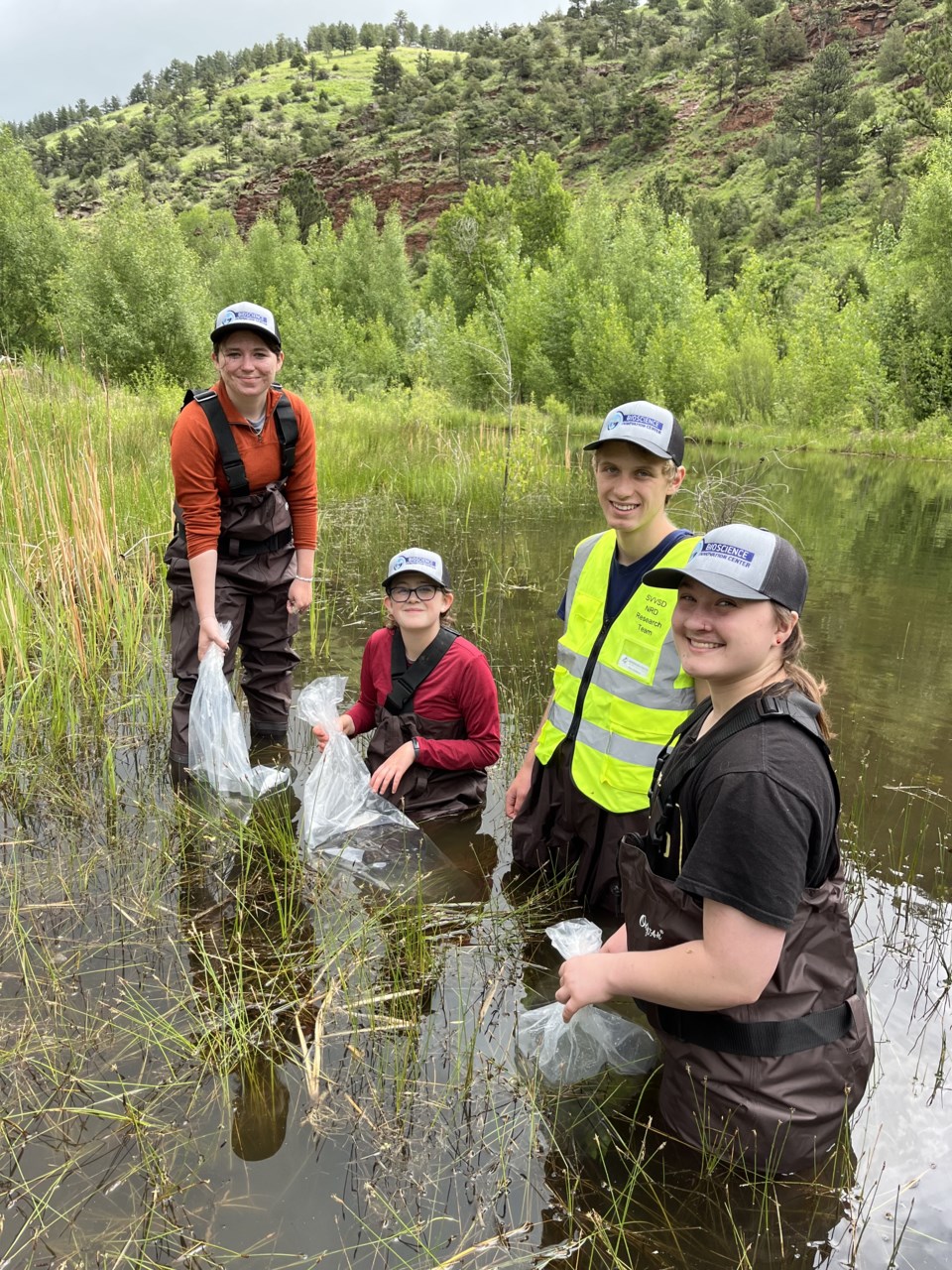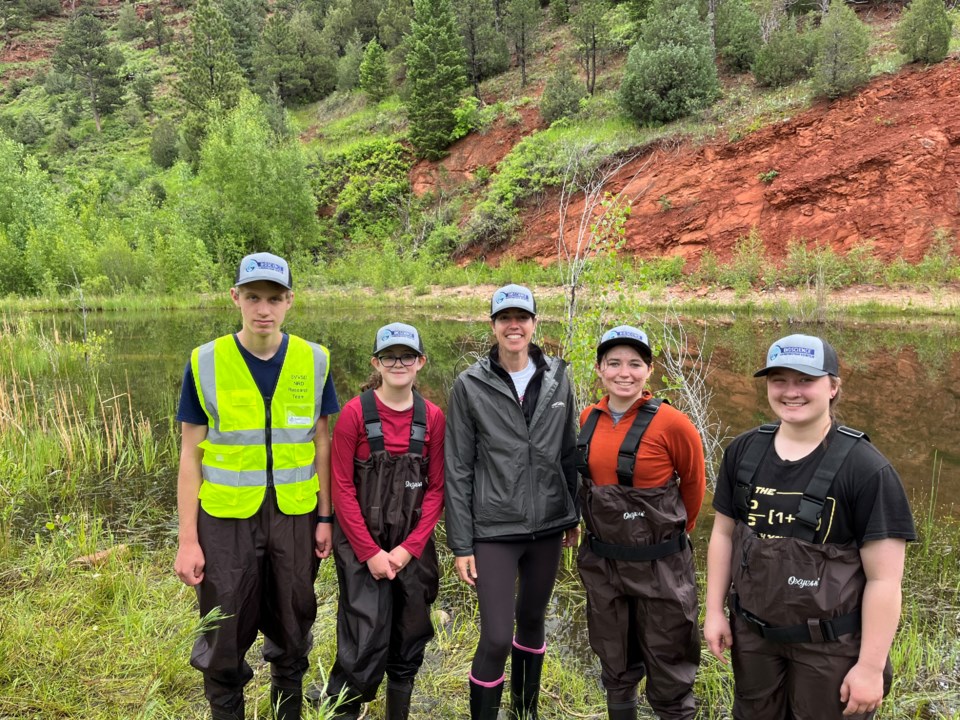St. Vrain Valley Students gathered at the Innovation Center on Friday to say farewell to Northern Leopard Frog tadpoles.
Students at the SVVSD Innovation Center have spent the better part of the year learning how to care for the Northern Leopard Frog tadpoles. They worked with Ocean First Institute, Boulder County Parks and Open Space, Colorado Parks and Wildlife, The Watershed Center, U.S. Fish and Wildlife and the city of Boulder Open Space Mountain and Parks to understand the proper water conditions, what they eat, how to ready tanks and more.
Three years ago, students who participated in the Innovation Center's Conservation Data Science project team raised northern redbelly dace fish and released the endangered species into Webster Pond. To care for the fish, students had to visit twice a day and during the summer months.
Looking for a species that would align better with the academic calendar, said Jayme Sneider biosciences teacher at the Innovation Center. The group landed on increasing the number of Northern Leopard Frogs that are native to the Front Range and has been identified as a species of concern by CPW.

Northern Leopard Frogs had never been raised in-house before, Sneider said. Students had to learn about biosecurity measures to keep fungi and viruses away from the tadpoles as they grew.
The frog eggs came from Boulder and Fort Collins. Upon arrival, students learned how to rinse the eggs and they created a special hammock that held the eggs until they hatched.
The students raised the tadpoles to a healthy point, Sneider said and then released them into Lefthand Creek near Lefthand Canyon on Friday.
Students will continue to visit the site to see if the frogs have survived in the wild and to monitor water quality. The research done from the project helps students not only further their understanding of conservation topics but it allows them to conduct outreach to the community, Sneider said.
“It’s really all about spreading that word and educating people and at the same time the students get to have a lot of fun and get a lot of hands-on work alongside professionals in the field,” Sneider said.



